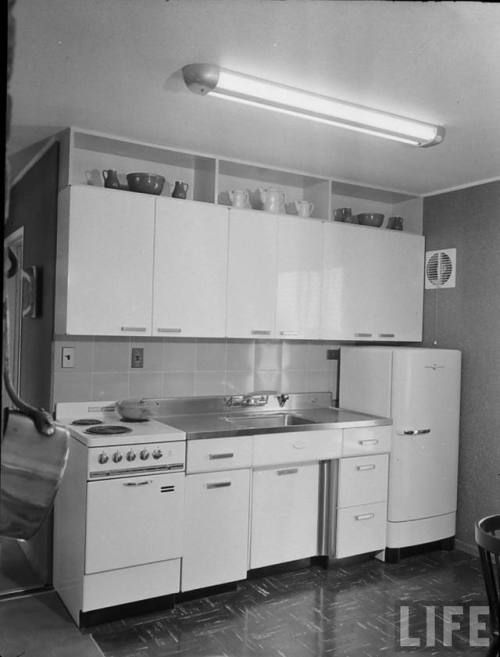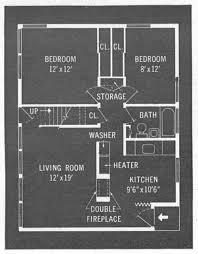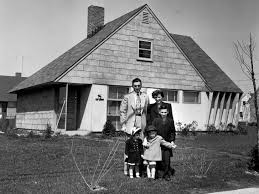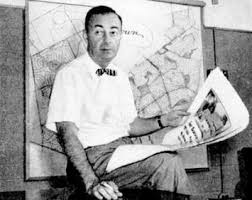 The Building of Suburbia
The Building of Suburbia
by, Wendy Elkis Girnis, Class of 1977
From 1941 until 1945, the United States was involved in WWII. It was fought in Europe, as well as in the Pacific. During those years, 16 million Americans served in the Armed Forces. Back at home, life consisted of rubber drives, steel drives, and book drives, as well as the rationing of food and other items. Housing construction had stopped to allocate building supplies to the war effort. In 1944, the Veterans Administration home loan program came into existence. This program had a major impact on the housing market, and led to the growth of suburban areas including Levittown and Hicksville.
The Start of Modern Suburbia
Abraham Levitt was known for building custom homes on Long Island for the upper-middle-class. After WWII, Abraham, and his sons William and Alfred focused on mass produced homes. These homes could be quickly constructed. In Levittown and Hicksville, due to a potato blight, most of the homes were built on potato farms that farmers were happy to sell. It took 27 steps to complete one home. In the beginning, 18 houses a day were being built. By 1948, there were 30 homes built each day. A 1948 Harper’s article stated that by July of 1948, Levitt was building 150 homes a week. The homes were a single floor with expansion attics. All homes were built on slabs and cost around $8,000. The G.I Bill, which helped veterans transition from soldier to citizen, assisted veterans who qualified get a low-interest, no money down loan for a home.
 Waiting on Line: First Day of Levitt Home Sales
Waiting on Line: First Day of Levitt Home Sales
Amenities Included
A March 9, 2003 article in the New York Times reported that by 1951, there were 17,000 Levitt homes built on Long Island, 12,500 in Levittown with the rest in Wantagh, Hicksville, and East Meadow. The first 300 families moved into Levittown October 1, 1947. At the end of 2 months, 1000 families were owners of a Levitt home. A Levitt community also included 7 Village Greens, which  One of 9 pools Levitt built for homeownersincluded a bakery, barbershop, and stationery store, 14 parks and playgrounds, and 9 community pools. Five schools were built, as well as 6 churches.
One of 9 pools Levitt built for homeownersincluded a bakery, barbershop, and stationery store, 14 parks and playgrounds, and 9 community pools. Five schools were built, as well as 6 churches. 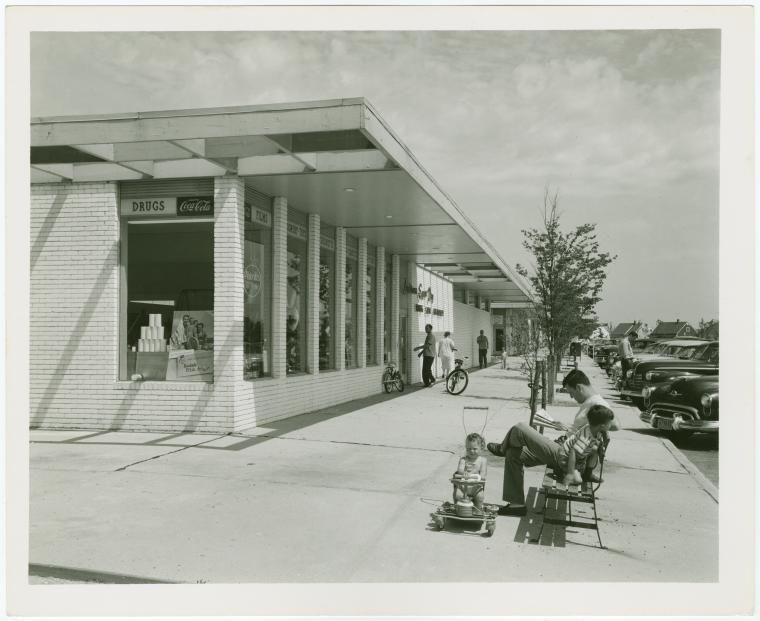 One of 7 Village Greens
One of 7 Village Greens
To keep costs low, Levitt did not use Union labor to construct his homes. By doing this, he was able to use labor-saving machinery like spray painters that the unions did not sanction. He also cut out the middlemen and purchased building materials from the manufacturer. These materials included things like lumber and televisions. Besides the televisions, Levitt homes also came with radiant heating, a GE range and refrigerator, and Venetian blinds. A Bendix washer was also included in the price of the home. Levitt even built his own facility to manufacture nails used in building homes.
A Restricted Community?
Unfortunately, there was also a discriminatory side to Levitt’s developments. The Federal Housing Administration (FHA) allowed developers to discriminate/segregate within public housing. Mortgages were offered by the FHA to non-mixed communities, which in turn caused developers not to accept any buyers who weren’t White. Levitt’s stance was that it was in the business's best interest to not sell to Black families.
According to a Newsday article from November 19, 2017, in a 1954 interview with the “Saturday Evening Post,” Levitt explained his racial exclusion policy this way:
“If we sell one house to a Negro family, then 90 to 95 percent of our White customers will not buy into the community. That is their attitude, not ours. We did not create it, and we cannot cure it. As a company, our position is simply this: we can solve a housing problem, or we can try to solve a racial problem. But we cannot combine the two.”
| Deeds included this restriction: “The tenant agrees not to permit the premises to be used or occupied by any person other than members of the Caucasian race, but the employment and maintenance of other than Caucasian domestic servants shall be permitted.” —Levittown Corporation Lease (1948) |
Levitt didn’t look at this as discriminatory. In his view, it was intended to maintain the value of the properties. Jews were also discriminated against. In 1948, the U.S. Supreme Court invalidated racial covenants/deed restrictions. Levitt didn’t remove his clauses until 1949 but continued to sell to White families only. Only after the assassination of Dr. Martin Luther King did Levitt open up sales to families of color. By 1960, a third of the population of Levittown was Jewish, with another third Roman Catholic, and a third Protestant. Still, not one resident in Levittown was African American, with Hicksville following suit.
Present Day Hicksville
Hicksville has changed since I left in 1989. Levitt homes have been remodeled to look like mini-mansions. It seems more crowded than I remember. Mid-Island Plaza has been renamed, and Sears is no longer there. The demographics of Hicksville have also changed. According to DataUSA, in 2021, the five largest ethnic groups in Hicksville were White (Non-Hispanic) 47.2%, Asian (Non-Hispanic) 32.8%, Hispanic 13.6%, African American 3.38%, and Multiracial 2.43%. The remaining percentages were made up of Native Americans or Native Hawaiian/Pacific Islander.
Levitt was a pioneer in the construction business and helped suburban areas grow with the aid of the G.I. Bill. MOST veterans looking to start a new life after the war were able to purchase or lease an affordable home in Hicksville or Levittown. Unfortunately, African American veterans who fought for our country were not allowed to purchase a Levitt home. It is nice to see that all people are now truly welcomed in Hicksville today.
Resources:
If you want to read more about Levitt and his communities, click the links below.
- https://www.census.gov/content/dam/Census/library/publications/2020/demo/acs-43.pdf
- https://levittownpl.org/levittown-history/
- https://en.wikipedia.org/wiki/Levitt_%26_Sons
- https://dspace.mit.edu/handle/1721.1/44333
- https://opened.cuny.edu/courseware/lesson/453/student/?section=3
- https://www.ucl.ac.uk/USHistory/Making/LEvitt.htm
- https://www.huduser.gov/portal/hudtimeline_1940.html#
- https://untappedcities.com/2020/07/31/the-controversial-history-of-levittown-americas-first-suburb/
- https://www.liherald.com/stories/levitt-homes-built-on-restriction-and-corruption,116981
- https://www.nytimes.com/2003/03/09/realestate/if-you-re-thinking-living-levittown-built-all-once-no-longer-look-alikes.html?auth=login-google1tap&login=google1tap
- https://datausa.io/profile/geo/hicksville-ny/#:~:text=The%205%20largest%20ethnic%20groups,(Hispanic)%20(4.14%25)
- https://projects.newsday.com/long-island/segregation-real-estate-history/#nd-promo
- https://www.businessinsider.com/vintage-photos-levittown-suburbs-50s#levittown-in-long-island-new-york-is-widely-recognized-as-the-first-modern-american-suburb-6




